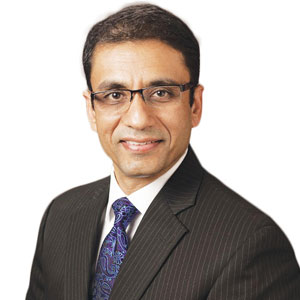THANK YOU FOR SUBSCRIBING

Technology and Smart Cities
Roger Jones, Executive General Manager Technology, Auckland Transport


Roger Jones, Executive General Manager Technology, Auckland Transport
Smart Cities, Digital Cities – the terminology is becoming increasingly irrelevant, and I wonder at times if it is like the “paperless office” - something everybody wants to achieve but never will. However, as cities evolve the impact of transport and technology, and the interaction between the two that enables citizens to make choices and informed decisions becomes more apparent, required and important.
The choices citizens are making, and will continue to make in the future, are evolving as the political, social and cultural aspects change, coupled with changing city landscapes, shared spaces, inner-city congestion and car-free spaces, drives citizens to consume more information as they go about their normal lives. Information has become critical to those making choices (all of us, in a multitude of ways) and the impact of the choice drives behaviours, congestion and the way of living for some. For example, online shopping. A physical product purchased from a variety of web-based retailers is delivered within an agreed timeline. But is anyone home to receive the delivery? How and when will it occur? How reliable is the delivery service?
Online grocery shopping and meal delivery services are an example of this. Busy working people and families have reduced the time spent on household tasks by moving to online shopping and delivery instead of venturing out to the local shops.
The growing demand for this type of service has contributed to technology developments that provide the interface, payment systems and associated delivery interactions to enable personal shopping as a service. In conjunction with online developments is the additional transport and associated transport technology to enable millions of individual packages and household consumables to be delivered on time to the right place.
When it comes to travel choices, the decision is completely dependent on the individual’s perception of value. Travel patterns and modes of travel change over time based on factors of cost, ease of use, reliability, weather, and what additional items a person must carry from A to B at the time. The value of the choice varies from person to person. For one person, the cost of running a car has proportionally the same impact on their income as the cost of using public transport to the income of another, others still may decide based on environmental impact reasons. To influence, and change, public behaviour, access to information and visibility of the alternatives are essential. These have to be accurate, as individuals will try something once, but if it is unreliable or too hard, they will not use it again. If a trial of something new is unsuccessful the first time, having people “try it again” is very difficult.
The quantity of data now generated by a city and available for organisations to turn into useful information is a new issue. A developing discussion topic is what data is worth acquiring, storing, and converting to information that is useful and relevant to various end users and service providers. Digital sensors are inexpensive and becoming ubiquitous within a city. The ways organisations store their data are changing. Although the cost of data storage has reduced, the complexity and costs of storage management are being outweighed by the costs of data management, data access rights, privileges, and security.
In the new world of sensors, vehicle-to-vehicle communications, vehicle-to-infrastructure communications, drones, and household appliance information, the issues of security and authenticity of devices, communication channels that carry the data, and the accuracy and timeliness of the data are becoming prominent. With so many interconnected devices, knowing which are real and authenticated, and not some villain trying to gain control, is an area of growth. Until the issues surrounding authentication are solved, the full opportunity to develop future cities will be constrained. I am sure that I do not want to be in a drone that doesn’t know about a temporary crane sticking up ahead of it, or worse, that only exists in a trojan piece of location data that my drone just accepted!
See More: Top Travel and Hospitality Consulting CompaniesWeekly Brief
I agree We use cookies on this website to enhance your user experience. By clicking any link on this page you are giving your consent for us to set cookies. More info
Read Also













